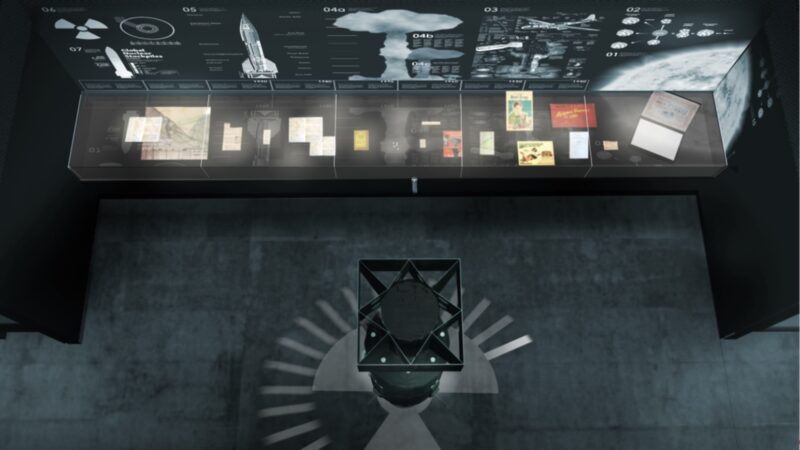
Cold War Exhibition

“The danger of war is not eradicated.” This was how Prime Minister Viggo Kampmann began his text in the pamphlet “Hvis krigen kommer” (If War Comes), which was distributed to households throughout Denmark in 1962. The pamphlet informed the population about how to behave in the event of a nuclear war, including instructions on how to create private shelters.
In the new exhibitions at the Cold War Museum REGAN Vest, the audience gets close to the everyday life of the Danes during the Cold War. The exhibitions are structured as islands that can be visited independently of each other. They cover topics such as nuclear power and the fear of nuclear war, civil defense, and covert planning during the Cold War, as well as information about the bunker’s unique construction. The exhibition begins with a quick overview of the international events that shaped the Cold War.
The new atomic technology created both hope and fear. On one hand, it was seen as an inexhaustible and inexpensive source of energy for the benefit of the world’s population. On the other hand, it was seen as a technology that could be used to create devastating weapons.
This created tensions between East and West on the global stage, and it generated political tensions within Denmark. Were you for or against Denmark’s involvement in the military alliance NATO? Literature, art, and music – everything took on political significance, and it was often challenging for both sides to express nuanced opinions in the highly polarized debate.
The threat of a nuclear war was taken very seriously worldwide, including in Denmark, as evidenced, in part, by the construction of REGAN Vest. But much more planning was happening in secret. For example, there were lists of cars and homes that authorities could requisition in the event of war, and hidden warehouses across the country were stocked with equipment intended to help the population through a war.
The Cold War bunker has a very unique construction – large parts of it are designed according to NATO’s regulations and recommendations for atomic-secure government bunkers.
The exhibitions also include a Cold War cinema with short films and reports that run on a loop.